Effective communication in healthcare extends beyond the mere exchange of information; it encompasses a deeper understanding of patients’ needs, beliefs, and values. Patient-centred communication involves actively listening to patients, acknowledging their concerns, and responding in a way that respects their individuality and autonomy.
When healthcare providers speak their patients’ language, whether it’s the language they grew up speaking or one they’ve become proficient in, it signals a commitment to breaking down barriers and establishing a connection based on mutual understanding. Language proficiency facilitates clear and accurate communication, ensuring that patients can express themselves fully and providers can convey important medical information comprehensively.
Furthermore, speaking the patient’s language goes beyond words; it includes familiarity with cultural norms, customs, and communication styles. This cultural competence enables healthcare providers to navigate sensitive topics, address potential misunderstandings, and adapt their approach to meet the unique needs of each patient.
By implementing patient-centred communication, healthcare providers not only strengthen their relationships with patients but also encourages them to play an active role in their healthcare journey. Patients who feel heard and understood are more likely to trust their providers, adhere to treatment plans, and engage in shared decision-making, leading to better health outcomes overall.
Exploring Healthcare Effects of Language Barriers
Language barriers in healthcare represent more than just obstacles to effective communication; they can profoundly impact the quality, safety, and equity of healthcare delivery. These barriers arise when patients and healthcare providers cannot effectively communicate due to differences in language proficiency, and they manifest in various ways throughout the healthcare encounter.
One significant consequence of language barriers is the potential for misunderstanding and miscommunication. Patients may struggle to accurately convey their symptoms, medical history, and concerns to their healthcare providers, leading to incomplete or inaccurate assessments. Conversely, providers may find it challenging to explain diagnoses, treatment options, and preventive measures in a manner that patients can understand fully.
This breakdown in communication can have serious ramifications for patient safety and health outcomes. Misdiagnoses, medication errors, and treatment delays are more likely when crucial information is lost in translation. Additionally, patients who do not comprehend their diagnosis or treatment plan may be less likely to adhere to medical recommendations, leading to poorer health outcomes and increased healthcare utilisation.
Language barriers also contribute to disparities in healthcare access and quality. Linguistic minority populations, including immigrants, refugees, and individuals with limited English proficiency, often face barriers to accessing healthcare services due to a lack of language-concordant providers and interpreters. As a result, they may experience delays in seeking care, receive lower-quality care, and encounter difficulties navigating the healthcare system.
Furthermore, language barriers can exacerbate existing health inequities, disproportionately affecting vulnerable populations who already face socioeconomic, racial, and cultural disparities in healthcare. These disparities not only undermine the principles of patient-centred care but also perpetuate systemic injustices that contribute to health inequities.
Fostering Trust and Active Participation
Building trust and fostering engagement between healthcare providers and patients is essential for establishing a therapeutic alliance that supports effective healthcare delivery and positive health outcomes. This trust is not merely transactional but rather built on a foundation of mutual respect, understanding, and communication. Language plays a pivotal role in shaping this dynamic, serving as a bridge that connects providers and patients across linguistic and cultural divides.
When healthcare providers speak the language of their patients, it sends a powerful message of inclusivity and respect. It signifies a willingness to meet patients where they are, to understand their unique backgrounds and perspectives, and to engage with them on their own terms. This linguistic congruence helps to break down barriers that may otherwise hinder open communication and collaboration.
Language barriers can often create feelings of frustration, anxiety, and alienation for patients, particularly those with limited English proficiency or belonging to linguistic minority groups. In such cases, patients may hesitate to fully express their concerns or ask questions, fearing that they will not be understood or taken seriously. This reluctance to communicate openly can impede the flow of information, compromise the accuracy of medical histories, and hinder the shared decision-making process.
Conversely, when patients can communicate with their providers in their preferred language, it cultivates a sense of comfort, confidence, and trust. Patients feel authorised to articulate their symptoms, share their medical history, and voice their preferences without fear of being misunderstood or marginalised. This open exchange of information allows providers to gain deeper insights into patients’ needs, values, and goals, enabling them to personalised care plans that are truly responsive to individual circumstances.
Furthermore, language-concordant communication fosters a sense of partnership between providers and patients, wherein both parties actively collaborate in the pursuit of shared health objectives. Patients who feel heard, respected, and involved in their care are more likely to adhere to treatment recommendations, adopt healthy behaviours, and participate in preventive health measures. This, in turn, can lead to better health outcomes, reduced healthcare disparities, and enhanced patient satisfaction.
Beyond the immediate benefits to individual patients, language-concordant communication contributes to the broader goals of promoting cultural competency and health equity within healthcare systems. By recognising and valuing linguistic diversity, healthcare organisations can create environments that are more welcoming, inclusive, and responsive to the needs of all patients, regardless of their language background.
Overcoming Challenges in Language Access
Safeguarding language access in healthcare involves a complex environment of linguistic diversity, resource limitations, and institutional barriers. Addressing these challenges requires a concerted effort from healthcare organisations, policymakers, and stakeholders to create an inclusive and accessible healthcare environment for all individuals, regardless of their language proficiency.
One of the primary challenges in providing language access is the sheer diversity of languages spoken by patients within healthcare settings. Communities served by healthcare organisations often comprise individuals from various linguistic backgrounds, each with unique communication needs. Identifying the languages spoken by patients and ensuring access to qualified interpreters or translators proficient in those languages is essential for effective communication and care delivery.
However, ensuring the availability of trained language assistance personnel can be logistically challenging, especially in regions with limited resources or linguistic diversity. Healthcare organisations must grapple with issues such as interpreter availability, scheduling conflicts, and the financial costs associated with providing language services. These resource constraints can pose significant barriers to delivering timely and high-quality care to linguistically diverse populations.
Also, institutional barriers within healthcare settings can further impede effective language access. Policies and procedures that do not prioritise language assistance services or provide inadequate training for staff in working with interpreters can hinder communication and compromise patient care. Additionally, cultural attitudes and biases among healthcare providers may contribute to the underutilisation of language services, leading to disparities in care for patients with limited English proficiency.
To address these challenges, healthcare organisations must adopt a comprehensive approach that encompasses policy changes, resource allocation, and cultural competency training. Implementing language access policies that prioritise the provision of language services, investing in interpreter training and certification programs, and taking advantage of technology-enabled language translation services can help overcome logistical barriers and improve access to care.
Furthermore, fostering a culture of inclusivity and respect for linguistic diversity within healthcare settings is crucial for promoting effective communication and patient-centred care. This involves raising awareness about the importance of language access, providing education and training on working with interpreters, and actively engaging with linguistically diverse communities to better understand their needs and preferences.
Strategies for Effective Multilingual Communication
Effective multilingual communication is vital for breaking down language barriers and ensuring that all patients receive equitable access to healthcare services. Healthcare organisations can implement a variety of strategies to facilitate communication between patients and providers, regardless of their language backgrounds. Here are some key approaches:
Professional Interpreter Services: Healthcare facilities should prioritise the availability of professional interpreter services. These services may include both in-person interpreters and remote options, such as telephone or video interpretation. Trained interpreters play a crucial role in accurately conveying medical information, facilitating dialogue between patients and providers, and ensuring that communication is clear and effective.
Language Assistance Programs: Establishing comprehensive language assistance programs within healthcare organisations can streamline access to language services for patients. These programs may include language hotline services, bilingual staff members who can provide basic interpretation, and access to qualified interpreters or translators either on-site or through telehealth platforms.
Culturally Competent Staff Training: Healthcare providers and staff should receive training in cultural competency and effective communication strategies for working with patients from diverse linguistic backgrounds. This training should emphasise the importance of linguistic diversity, raise awareness of cultural nuances, and provide practical guidance on how to navigate language-related challenges in healthcare encounters.
Language-Concordant Care Models: Implementing language-concordant care models, where patients are matched with providers who speak their preferred language, can enhance communication and patient satisfaction. This approach fosters a sense of trust and rapport between patients and providers, leading to improved health outcomes and higher levels of patient engagement.
Utilisation of Technology: Exploiting technology-enabled solutions, such as language translation apps or tele-interpretation platforms, can expand access to language services and facilitate communication in real-time. These tools can be particularly useful in settings where in-person interpreters may not be readily available, allowing for immediate interpretation support via digital platforms.
Patient Education Materials in Multiple Languages: Healthcare organisations should develop and distribute patient education materials in multiple languages to ensure that all patients can access essential health information in their preferred language. This may include pamphlets, brochures, instructional videos, and online resources translated into languages commonly spoken by the patient population.
Community Partnerships and Cultural Liaisons: Collaborating with community organisations, cultural liaisons, and community health workers can help healthcare providers better understand the linguistic and cultural needs of diverse patient populations. These partnerships can facilitate outreach efforts, provide cultural competency training to healthcare staff, and serve as valuable resources for connecting patients with language support services.
Advancing Health Outcomes via Language
Language concordance, the alignment of the language spoken by healthcare providers with that of their patients, serves as a cornerstone of effective communication in healthcare settings. This alignment not only bridges linguistic divides but also fosters a deeper understanding, trust, and engagement between patients and providers, ultimately leading to improved health outcomes.
Enhanced Understanding: Effective communication is the foundation of quality healthcare delivery. When patients and providers share a common language, it eliminates the barriers that hinder clear and accurate communication. Patients can articulate their symptoms, concerns, and medical histories with ease, while providers can explain diagnoses, treatment options, and preventive measures in a manner that patients can readily comprehend. This mutual understanding enables more informed decision-making and facilitates collaborative care planning personalised to the individual needs of each patient.
Increased Adherence: Clear communication in the patient’s language is closely linked to improved adherence to treatment plans. Patients who understand their diagnoses and treatment instructions are more likely to adhere to prescribed medications, follow recommended lifestyle modifications, and attend scheduled follow-up appointments. Language concordance reduces the likelihood of misinterpretations or misunderstandings that could undermine adherence, thereby promoting better management of chronic conditions, prevention of complications, and overall health maintenance.
Improved Patient Satisfaction: Effective communication fosters positive patient experiences and higher levels of satisfaction with healthcare encounters. When patients can express themselves comfortably and feel understood by their providers, it strengthens the patient-provider relationship and instils confidence in the care being delivered. Patients appreciate the effort made to accommodate their linguistic preferences, leading to greater trust, loyalty, and willingness to engage in ongoing healthcare interactions.
Timely Diagnosis and Intervention: Language concordance facilitates more efficient and accurate healthcare delivery by reducing communication barriers that could impede timely diagnosis and intervention. Providers can gather pertinent information, conduct thorough assessments, and make informed clinical decisions without the delays or uncertainties caused by language barriers. This timely access to care is particularly critical in urgent or emergent situations where swift intervention can significantly impact health outcomes.
Cultural Sensitivity and Trust: Speaking the patient’s language goes beyond mere communication; it demonstrates cultural competence and respect for patients’ cultural backgrounds and identities. Providers who engage with patients in their preferred language convey a commitment to understanding and honouring their unique perspectives, beliefs, and values. This cultural sensitivity fosters a sense of trust and rapport between patients and providers, creating a supportive healthcare environment where patients feel valued, authorised, and confident in the care they receive.
Final Thoughts and Valuing Linguistic Diversity
As healthcare systems continue to evolve in response to the growing diversity of patient populations, investing in linguistic diversity emerges not only as a necessity but as a strategic imperative for delivering equitable and high-quality care. Language access is fundamental to ensuring that all individuals, regardless of their linguistic background, have equal opportunities to access healthcare services and participate fully in their care journey.
By prioritising linguistic diversity, healthcare organisations can reap numerous benefits that extend beyond improved patient-provider communication. These include:
Enhanced Patient Engagement: Speaking patients’ languages fosters trust, strengthens rapport, and authorises patients to actively engage in their healthcare decisions. Patients who feel understood and respected are more likely to adhere to treatment plans, participate in preventive care, and take ownership of their health.
Improved Health Outcomes: Effective communication, facilitated by language concordance, leads to better health outcomes. Clear communication enables accurate diagnoses, appropriate treatment plans, and improved medication adherence, ultimately contributing to better patient health and well-being.
Reduction of Health Disparities: Addressing language barriers is a crucial step in reducing disparities in healthcare access and outcomes. By ensuring that linguistic minorities have equal access to care, healthcare organisations can mitigate disparities related to language, culture, and socioeconomics, promoting health equity for all.
Improved Patient Experience: Providing language-concordant care enhances the overall patient experience by creating a welcoming and inclusive healthcare environment. Patients feel valued and respected when they can communicate effectively with their providers, leading to higher levels of satisfaction and loyalty.
Legal and Ethical Compliance: Investing in language access aligns with legal and ethical mandates, that prohibit discrimination based on race, colour, or national origin in federally funded programs, including healthcare. Ensuring language access is not only a legal requirement but also an ethical imperative rooted in principles of fairness and equity.
In conclusion, investing in linguistic diversity is not just a matter of compliance; it is a strategic investment in the delivery of patient-centred, culturally competent care. By prioritising language access, healthcare organisations can create inclusive environments that respect the linguistic and cultural diversity of patients, promote trust and engagement, and ultimately improve health outcomes for all individuals. As healthcare systems adopt linguistic diversity, they move closer to achieving the goal of healthcare that is truly accessible, equitable, and responsive to the needs of diverse communities.






